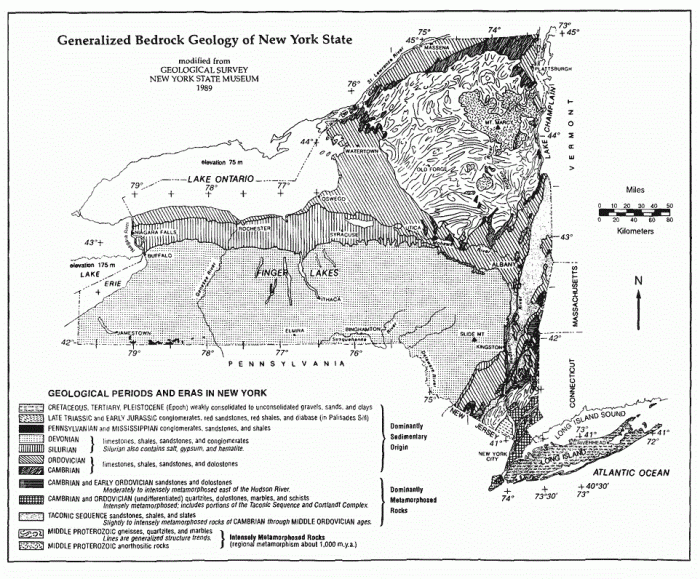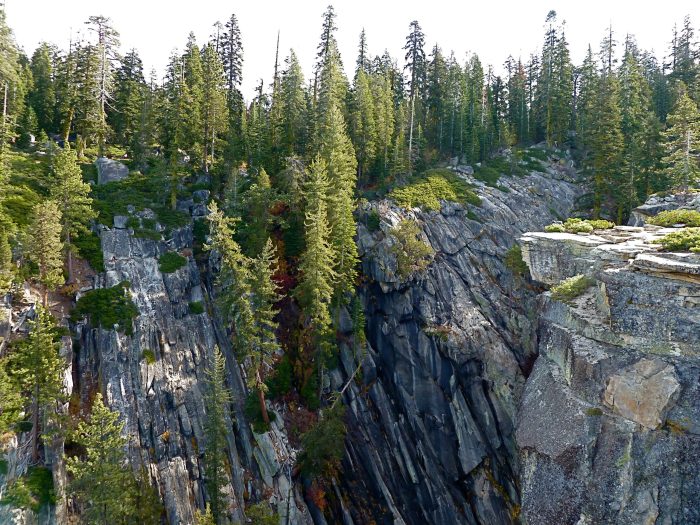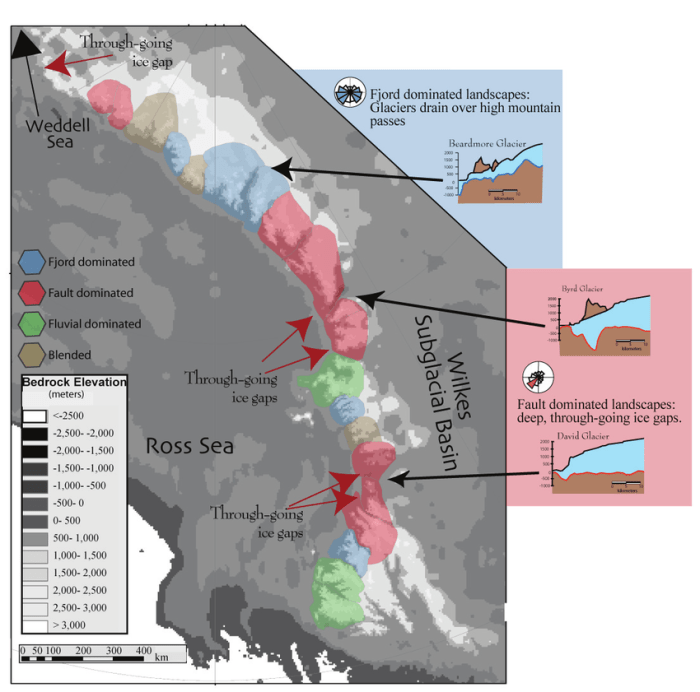In which landscape region is the most resistant bedrock found – In the realm of geology, the question of bedrock resistance takes center stage, with specific regions boasting exceptionally durable rock formations. Understanding the factors that contribute to this resilience is crucial for various fields, including construction, infrastructure, and conservation.
This exploration delves into the geological processes that shape bedrock resistance, examining the role of mineral composition, grain size, weathering, and erosion. It also unveils the methods used to identify regions with highly resistant bedrock, showcasing geological surveys and mapping techniques.
In which landscape region is the most resistant bedrock found?

The resistance of bedrock, the solid rock beneath the soil and loose material, varies significantly across different landscape regions. The most resistant bedrock is typically found in regions with a complex geological history involving multiple episodes of mountain building, metamorphism, and erosion.
One of the most well-known examples of a region with highly resistant bedrock is the Canadian Shield. This vast area of Precambrian rock, which covers much of eastern and central Canada, has been subjected to several orogenies, or mountain-building events, over billions of years.
These events have resulted in the formation of a thick and stable crust composed of igneous and metamorphic rocks, including granite, gneiss, and schist.
Geological Context
The geological processes that contribute to bedrock resistance include:
- Metamorphism: Metamorphic processes involve the transformation of existing rocks under high temperatures and pressures. This can result in the formation of new minerals and the recrystallization of existing minerals, leading to increased strength and durability.
- Uplift and erosion: Uplift and erosion can expose bedrock to weathering and erosion, which can remove weaker layers and leave behind more resistant bedrock.
- Folding and faulting: Folding and faulting can create complex geological structures that can further enhance the strength and resistance of bedrock.
Different types of bedrock have different levels of resistance. Igneous rocks, such as granite and basalt, are generally more resistant than sedimentary rocks, such as sandstone and limestone. Metamorphic rocks, such as gneiss and schist, can be highly resistant depending on their composition and the degree of metamorphism they have undergone.
Factors Influencing Bedrock Resistance
The resistance of bedrock is influenced by several factors, including:
- Mineral composition: The mineral composition of bedrock plays a significant role in its resistance. Minerals with high hardness and interlocking crystal structures, such as quartz and feldspar, contribute to greater resistance.
- Grain size: The grain size of bedrock also affects its resistance. Finer-grained rocks are generally more resistant than coarser-grained rocks because they have a higher density of interlocking crystals.
- Weathering and erosion: Weathering and erosion can weaken bedrock over time. Chemical weathering, caused by exposure to water and oxygen, can dissolve minerals and create cracks and fissures. Mechanical weathering, caused by physical forces such as temperature changes and abrasion, can break down bedrock into smaller pieces.
Identification of Resistant Bedrock Regions, In which landscape region is the most resistant bedrock found
Several methods are used to identify regions with highly resistant bedrock, including:
- Geological surveys: Geological surveys involve mapping and studying the bedrock in a region. This can provide valuable information about the composition, structure, and resistance of the bedrock.
- Geophysical surveys: Geophysical surveys use instruments to measure the physical properties of bedrock, such as its density and seismic velocity. This information can be used to infer the strength and resistance of the bedrock.
- Remote sensing: Remote sensing techniques, such as satellite imagery and aerial photography, can be used to identify areas with exposed bedrock and to assess its resistance based on its surface characteristics.
Case Studies
One well-known example of a region with highly resistant bedrock is the Canadian Shield. The Canadian Shield is composed of Precambrian rock that has been subjected to several orogenies and has been uplifted and eroded over time. This has resulted in the formation of a thick and stable crust with highly resistant bedrock.
Another example of a region with highly resistant bedrock is the Baltic Shield. The Baltic Shield is composed of Precambrian rock that has been subjected to several orogenies and has been uplifted and eroded over time. This has resulted in the formation of a thick and stable crust with highly resistant bedrock.
Applications of Resistant Bedrock
Resistant bedrock has several practical applications, including:
- Construction: Resistant bedrock is often used as a foundation for buildings and other structures. It can also be used as a building material itself, such as in the construction of bridges and dams.
- Infrastructure: Resistant bedrock is often used in the construction of infrastructure, such as roads and railways. It can also be used as a source of aggregate for concrete and other construction materials.
- Mining: Resistant bedrock is often mined for valuable minerals, such as gold and copper. It can also be mined for construction materials, such as crushed stone and gravel.
Conservation and Management
It is important to conserve and manage regions with resistant bedrock because these regions provide several benefits, including:
- Natural resources: Resistant bedrock is a source of valuable natural resources, such as minerals and construction materials.
- Water resources: Resistant bedrock can help to protect water resources by preventing erosion and contamination.
- Ecosystem services: Resistant bedrock can provide habitat for plants and animals and can help to maintain biodiversity.
Human activities can impact the resistance of bedrock, including:
- Mining: Mining can damage bedrock and reduce its resistance.
- Construction: Construction can damage bedrock and reduce its resistance.
- Pollution: Pollution can damage bedrock and reduce its resistance.
It is important to take steps to mitigate the impacts of human activities on bedrock resistance, such as:
- Regulating mining and construction activities: Regulating mining and construction activities can help to minimize damage to bedrock.
- Protecting water resources: Protecting water resources can help to prevent erosion and contamination of bedrock.
- Educating the public: Educating the public about the importance of bedrock resistance can help to raise awareness and encourage conservation efforts.
Clarifying Questions
What factors contribute to bedrock resistance?
Mineral composition, grain size, weathering, and erosion all play a role in determining bedrock resistance.
How are regions with highly resistant bedrock identified?
Geological surveys and mapping techniques are employed to identify regions with highly resistant bedrock.
What are the practical applications of resistant bedrock?
Resistant bedrock is used in construction, infrastructure, and other fields where durability is essential.

